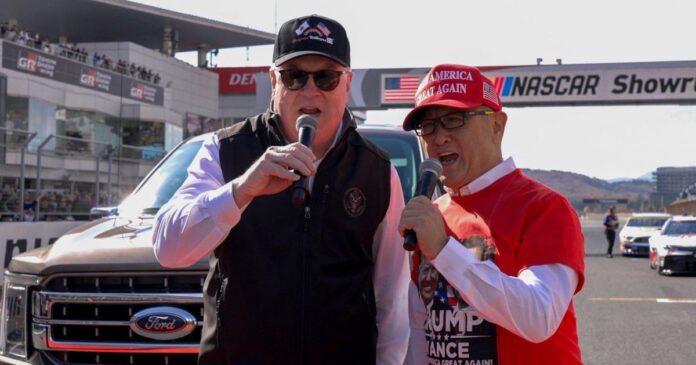Toyota’s chairman, Akio Toyoda, made a highly visible display of alignment with American interests at a recent event attended by the US ambassador to Japan, signaling a strategic move as the automaker navigates ongoing trade dynamics with the United States. The event, held at Fuji Speedway, featured prominent displays of American iconography, including numerous US flags and a barbeque-focused menu, alongside both US-built and Japanese vehicles.
Toyoda’s gesture included wearing a “Make America Great Again” (MAGA) hat and a “Trump-Vance 2024” t-shirt while driving a Ford F-150 alongside Ambassador George Glass. The event also showcased six NASCAR race cars and featured drivers Jimmie Johnson, John Hunter Nemechek, and Kamui Kobayashi. These actions come as Toyota seeks to solidify its position in the US market and potentially mitigate future trade-related pressures.
Strategic Investment and Export Plans
Toyota recently announced a $10 billion investment in its US operations and officially opened a new battery manufacturing plant in North Carolina. The company is also exploring the export of vehicles built in the US to Japan, a move that aligns with recent statements from the Trump administration regarding reciprocal trade opportunities.
The Georgetown, Kentucky plant, which currently builds the Camry, has reserve capacity of 80,000-100,000 vehicles that could be repurposed for export. Toyota is evaluating the feasibility of exporting the Camry to Japan, where it was discontinued in the domestic market, creating a gap between the Corolla and Crown models.
Historical Precedents and Trade Dynamics
Toyota’s current strategy isn’t unprecedented. The automaker has a history of exporting US-built vehicles to Japan, including the first ‘wide-body’ Camry (XV10) in coupe and wagon guise, sold as the Scepter. Even more notably, Toyota once sold the US-built Chevrolet Cavalier in Japan from 1996 to 2000, a move orchestrated to appease the US government amid accusations of a closed Japanese auto market.
The decision to export US-built vehicles reflects a broader pattern of automakers adjusting to trade pressures. Honda and Mitsubishi previously exported US-built models to Japan in the 1980s and 1990s, demonstrating a willingness to leverage international production networks to navigate market access challenges.
Implications and Future Outlook
Toyota’s symbolic gestures and strategic investments suggest a proactive approach to maintaining strong trade relations with the United States. The company’s willingness to export US-built vehicles to Japan underscores a commitment to reciprocal trade practices and potentially mitigating future tariffs or trade barriers. The move also signals a broader recognition that maintaining access to key markets requires a willingness to adapt to shifting political and economic dynamics.
Ultimately, Toyota’s actions highlight the complex interplay between corporate strategy, international trade, and political signaling in the global automotive industry
